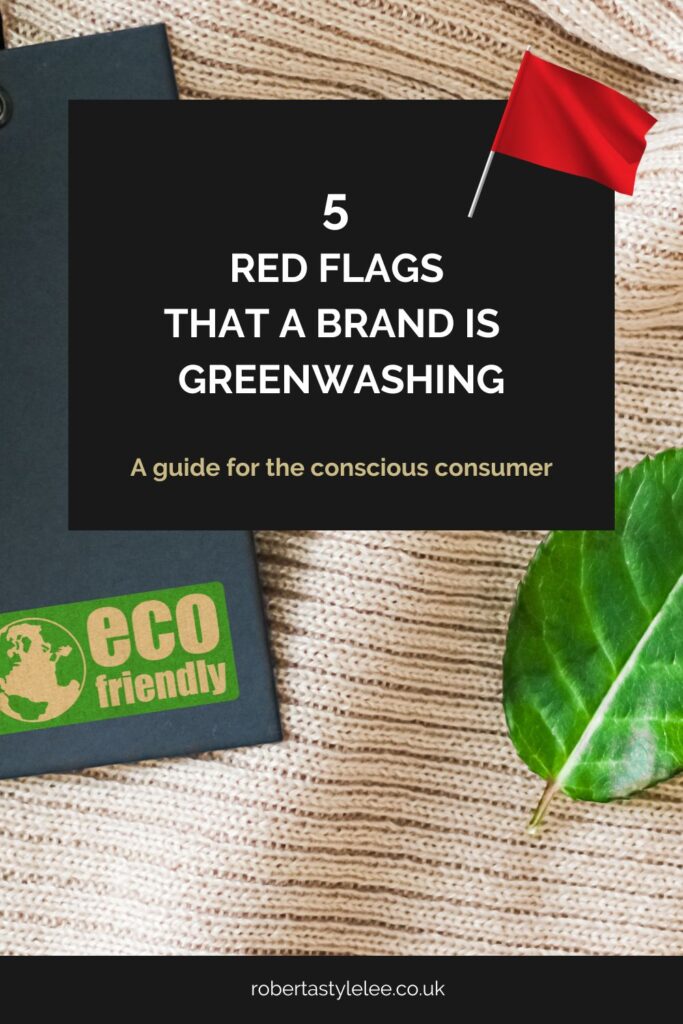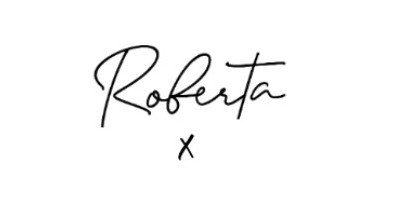Greenwashing has become more complex since I wrote my first original article What is Greenwashing back in 2018. Now we have a lot more to look out for – in this blog I outline 5 of the red flags that are likely indicators that greenwashing, and or purpose washing is happening. These are essential indicators help us know if the brands we’re spending our money with are using misleading marketing to make us think they are more ethical and sustainable than they actually are.
We’ve already seen H&M and ASOS, Boohoo and George at Asda come under fire by the The UK Competition and Markets Authority (CMA) for misleading claims in the marketing relating to their sustainable practices. Now these brands are far from being considered ethical or sustainable but, it’s worth noting if brands as big as these with the budget to innovate and pay for big marketing campaigns are misleading the public, then greenwashing is likely to be happening across the board.

It’s important for us to do our anti-greenwashing homework – and if we spot anything suspicious then we must be proactive and highlight it to the CMA for investigation. If enough of us flag up cases where brands are misrepresenting themselves they may end up being forced to change and fined hefty sums of money.
Until all businesses are held accountable for ethical and sustainable practices as the norm, we need to be vigilant and look out for those greenwashing red flags.
5 WARNINGS SIGNS OF greenwashing
1. Lack of DETAIL ON Ethical Conduct on their website
The brand does not have a clearly marked page on their website that talks about their ethics, ethical production & supply chain and that garment workers are paid a living wage and work in dignified and safe conditions. Look out for generic pages that lump everything together and only dedicate a paragraph, or worse a sentence saying that they act ethically.
This is too vague and we must be able to find out:
- How do they define ethics in their business?
- What processes are in place to ensure ethical practices are adhered to?
- How do we know workers paid fairly? Or are they on minimum wage? Are they being paid above a living wage? Are they part of a union?
- How do they audit their supply chain to ensure safe and fair conditions are met?
There’s a lot more here, and many questions that can, and should be be asked. Many small start-up brands may be doing these things already and sometimes communication just isn’t their strength. It’s always worth asking the question and recommending that this information is easily found on their website. An ethical brand will not have anything to hide or fob you off with a generic reply from one of their social media team.
2. Lack of Sustainable practices listed on their website
The brand does not have a clearly marked page on their website that talks about sustainability and what this means to them and how they are addressing it.
Check for generic terms, non-specific goals and lack of evidence that they are being measured using meaningful metrics. Look out for generic pages that lump everything together and only dedicate a paragraph, or worse a sentence saying that they are sustainable.
This is too vague and we must be able to find out:
- How do they define sustainability in their business?
- What processes are in place to ensure sustainable practices are adhered to?
- How do we know sustainability is integrated throughout their business and not just into one or two products?
- Do they audit their supply chain to ensure they are acting with integrity and follow sustainability practices also?
- What about end of life for products?
- Do they give advice on how to sustain the life of your product?
3. Use of generic sustainable terms and marketing catch-phrases
Look out for labels and quick claims for catching the attention of sustainably minded shoppers. Brands are quick to put sustainable logos and catchphrases on their products to make us believe we are spending our money on products aligned with our values. Until recently there was little regulation around this and brands were free to use a wide range of logos and slogans to suggest their products were sustainable.
Here are a few repeat offenders that I see:
- Eco-friendly – particularly misleading when used for PU, polyester and rPet a material made from plastic bottles, look out for people using the term keeping bottles out of the ocean. It’s best to avoid plastic clothes all together look for GOTS certified cotton, or even recycled cotton, Tencel, and even deadstock materials are more eco-friendly that polyester and RPet
- Aiming to be more sustainable by 2050 – what does more sustainable mean? That’s generic, having a year defined is good, but also, it’s so far away it means they don’t really need to do anything ‘now’ and timetabling sustainability way off into the future is just clever diversion marketing tactics.
- 30% sustainable polyester– 30% sustainable polyester in a garment doesn’t make the garment sustainable the 70% that is not cancels the 30% out.
- Green, greener and planet friendly are also widely used terms which are too generic. To use these statements they must tell us what it is that they are doing to be tread lighter on the planet. Is it the materials that are sustainably made, and if so how? Do they tell us? Can materials be washed & maintained without additional pollution, or for materials and packaging can it be recycled or returned to the soil at end of life.
4. Selective Transparency
Being transparent isn’t it enough if they brands are selective about what they share, if they don’t state meaningful information about their suppliers, or fail to disclose auditing criteria, or withhold information about areas they fall short on, we are only seeing what they want to share.
Transparency is good but it has to be warts and all.
Ironically H&M ranked no.1 in Fashion Revolutions transparency index in 2020 and they are considered one of the worst offenders in the fashion Industry.
H&M have been accused of many things over the years across multiple areas such as: ethical practice, overproduction and inappropriate destruction of garments, inappropriate use children in faux activism campaigns, a wide range of misleading sustainability claims, and more. So whilst transparency sounds good, we have to also look for the honesty in areas brands could be doing better. Communication is KEY. Selective communication undermines true transparency.
Misuse of the United Nations Sustainable Development Goals
Misuse of the United Nations Sustainable Development Goals is very common. In fact it’s something I call out the brands listed on Ethical Brand Directory about frequently, and I know they are doing more than they are reporting on. Sometimes this is simply down to lack of knowledge on how to communicate and report on the goals, for a lot of smaller brands – they are doing it all – product design, marketing, sales, shipping, and this can just slip past them. It’s not an excuse but we do need to be mindful about the size of the businesses we critique.
Once a business gets to a size where they have departments and multiple teams in place – this is no longer an acceptable faux pas. Reporting and data collection is an essential part of running a business and measuring outcomes, progress and ROI, is standard practice once a business starts to scale.
Watch out for larger businesses that are quick to flaunt the United Nation Sustainable Development Goals (SDGs) without using the SDG framework or the relevant SDG indicators to measure progress.. No reporting, no progress updates that share tangible data and deliverables…this is a HUGE RED FLAG.
The SDGs are in place to help all businesses leaders work towards ‘united goals’ for global prosperity for all. Too many businesses are adopting them for publicity sake, and using the goals to measure self-serving internal initiatives that do not contribute to the global intention behind goals.
5. Carbon Offsetting instead of addressing Carbon emissions
Carbon Offsetting instead of addressing carbon emissions is another huge repeat offender. Check to see if tree planting, carbon offsetting, or using vague claims such as ‘we are aiming for B-corp status’ or to be ‘carbon neutral’ is featured in their marketing without sharing an robust sustainability plans to achieve such goals, by X% and by X year.
Admittedly, there’s a lot to look out for and given greenwashing awareness is on the rise so are the tactics to help misdirect us. Which one have you noticed more frequently? For me, it’s the sustainable development goals and those using them in their publicity and talking about them, without really knowing much about them and using the top level goals as a tick boxing exercise.




